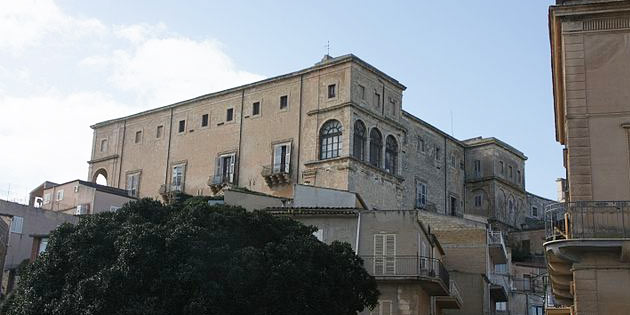Principe Palace in Aragona

Davide Mauro - CC4.0
Palazzo Principe di Aragona, also known as Palazzo del Principe Naselli, is the most representative building of the village of Aragon.
It was built at the same time as the foundation of the village which took place in 1606 at the behest of Baldassare III Naselli. In 1703, when Prince Baldassare Naselli IV took his priestly vows, the palace reached its maximum splendor following major renovations: on the main floor a private chapel was built, communicating with the Prince's bedroom and the central loggia; the rooms are enriched with new furnishings and a very rich picture gallery; several frescoes were created entrusted to the hand of the Flemish painter Borremans. With the death of the Prince in 1753, the decline of the palace began. In 1887 the palace became the seat of the Prince of Aragon Female Orphanage Institute.
The palace has a very severe and massive appearance. The imposing mass is lightened by the presence, on the external sides, of four elegant loggias. Over the centuries, two of the loggias have been walled up, a stained glass window has been created in one, while the fourth maintains its original characteristics and preserves part of the frescoes created by the Flemish painter Borremans.
Of particular value is the ante-gallery, which is believed to have originally been a chapel. It is a small room which preserves intact the original herringbone floor and the very valuable ceiling frescoed by Borremans (or according to some critics by Fumagalli). The ceiling portrays in the center the allegorical figure of Gloria, with her head surrounded by a crown, who raises a laurel wreath with her right hand as if to horn the Naselli coat of arms supported by two putti. On the four sides, all facing the central figure, the religious virtues of meekness, virtue, magnificence and triumph of lust are depicted.
From the room you enter one of the loggias, the only one in which it is still possible to admire a fresco by Borremans who represents the triumphant Victory on a chariot pulled by a quadrille, holding a scale, symbol of justice, from which a lion, symbol of fortitude, appears to emerge.
The ancient stables of the palace, at the behest of Luigi Burgio Naselli, were transformed into three small chapels: the Chapel of the Madonna of the Miraculous Medal, decorated in blue and white, the symbolic colors of the Madonna, and with Latin writings; the Chapel of the Sacred Heart of Jesus; and the Chapel of San Giuseppe.


